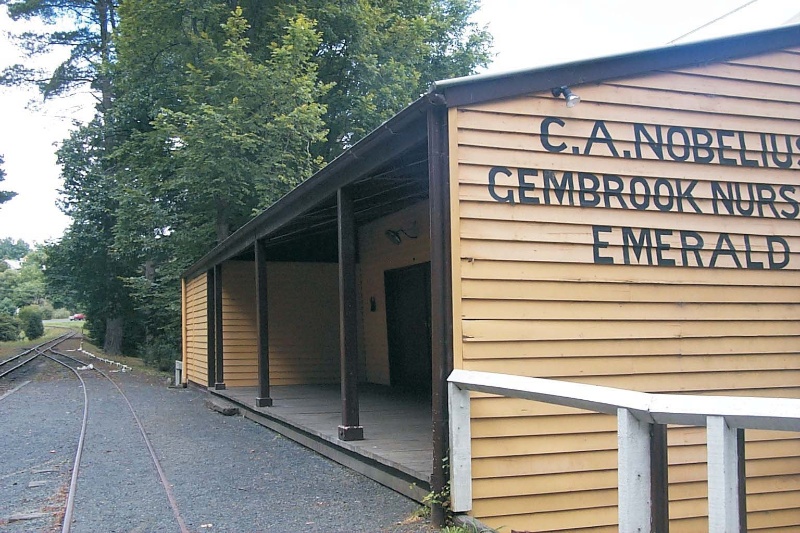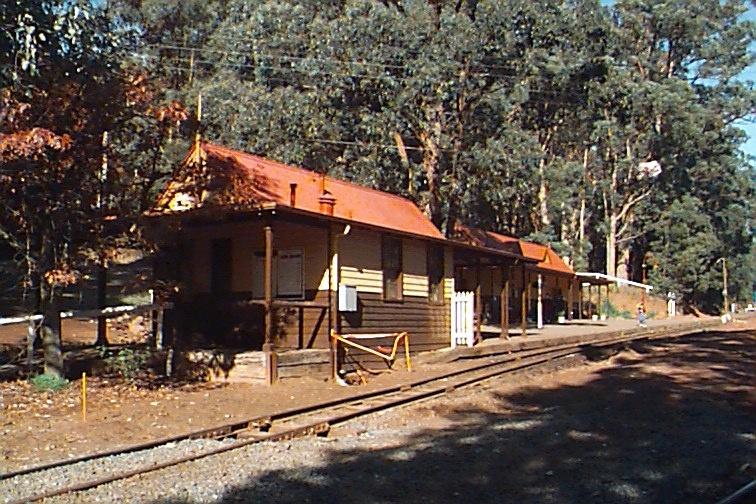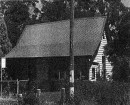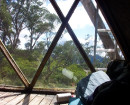UPPER FERNTREE GULLY TO GEMBROOK
EMERALD and COCKATOO and GEMBROOK, Cardinia Shire
-
Add to tour
You must log in to do that.
-
Share
-
Shortlist place
You must log in to do that.
- Download report



Statement of Significance
Regional Significance
Australian Heritage Commission proposed statement of significance
'The Puffing Billy Railway is a national tourist attraction and provides important recreational and educational functions within the State of Victoria. The historically significant role of the line in the development of this part of the Dandenong Ranges is recognised. Many of the structures, works and rolling stock associated with the line are themselves of high historical significance. A journey along this line also presents the surrounding landscape to the viewer in a sequence which adds to the quality of the visual experience.'
Cardinia Shire Heritage Study statement of significance `The Upper Ferntree Gully to Gembrook Railway is of importance to the State and Cardinia Shire because it provides evidence of the development of key transport networks across the district and the State. The linking of the railway to Gembrook in 1900 opened up access to new markets for timber and orchard industries which grew to State-wide prominence, as well as promoting tourist traffic particularly to Emerald. More recently the publicity given to the opening and running of the `Puffing Billy' service has gained national prominence.
This place is also valuable for its comparative age among other transport projects in the shire; potential to interpret the site historically (physical integrity and documentary evidence via railways plans); landmark qualities for both Victorians and local residents; and rarity as a type (functioning narrow gauge railway line) and a reflection of past now discontinued activities which sought the construction of steam railways on cheaper narrow gauge lines in many rural areas around 1900.'
-
-
UPPER FERNTREE GULLY TO GEMBROOK - Physical Description 1
This railway line skirts the edge of the former Pakenham Shire in Emerald and hence the notable Nobelius Nursery siding packing shed (c1904) faces the former shire across the track reserve. The Gembrook and Cockatoo railway station sites are within the scope of this study along with the reserve which is lined in places with Monterey pines and other exotic trees, marking its progress (mainly south of the Belgrave Gembrook Road) through open pasture and remnant native forest. Other sites along the line include the Bell family tramway junction at the Cockatoo station site.
Elements such as partial embankments, water storage tanks and trees remain at the Gembrook station site which is to be reinstated.(Graeme Butler Heritage Study 1996)
(see Cardinia Shire Heritage Study, 1996 for the former Pakenham Shire section of the line) Elements within the Emerald District of the Shire (stations, trackway, bridges): Stations include: Emerald, Clematis, Nobelius packing shed (see previous study), Nobelius, and Lakeside, line, and associated bridges.
Stopping places: Fielder, Wright. Former Pakenham Shire section This railway line skirts the edge of the former Pakenham Shire in Emerald and hence the notable Nobelius Nursery siding packing shed (c1904) faces the former shire across the track reserve. The Gembrook and Cockatoo railway station sites are within the scope of this study along with the reserve which is lined in places with Monterey pines and other exotic trees, marking its progress (mainly south of the Belgrave Gembrook Road) through open pasture and remnant native forest. Other sites along the line include the Bell family tramway junction at the Cockatoo station site{ see Winzenried: 208}. Elements such as partial embankments, water storage tanks and trees remain at the Gembrook station site.
Australian Heritage Commission proposed description `Puffing Billy is the popular name of the narrow gauge train which runs between Belgrave and Emerald Lake in the Dandenong Ranges. The Puffing Billy visual corridor may be considered as an elongated park of some 13km. The railway line generally follows the ridge and traverses a wide range of landscapes including farming land and natural forest. Although not the first narrow gauge to be constructed in Victoria (the honour belongs to the Wangaratta to Whitfield line opened in 1899), it is the remaining example of a small number of narrow gauge lines that were built by the Victorian Government around the turn of the century. The arrival of the railway often resulted in many changes in the settlement and development of an area. The construction of developmental railways probing radially from Melbourne was seen as a means of bringing settlers to outback areas. Steam trains started running to Upper Ferntree Gully in 1889 on a broad gauge line and in 1900 a narrow gauge line between Upper Ferntree Gully and Gembrook was opened. Despite the need to transfer goods and passengers from one train to another at Upper Ferntree Gully the narrow gauge was seen as being more appropriate as small trains were better able to negotiate the sharp curves, thus reducing the costs of earthwork construction in mountainous country. The opening of this line provided a stimulus for many businesses, particularly for primary producers such as Carl Alex Nobelius, whose nursery soon became the largest nursery in the southern hemisphere.
Today little remains of the nursery although the old packing shed still stands next to the line at Nobelius siding. Sawmillers, too, relied on the line and built numerous wooden tramways through the bush to bring their timber to the railhead at Gembrook. In the early days the train carried large quantities of timber, potatoes and other goods bound for Melbourne markets. The train soon became the focus for excursions in the Dandenongs which were becoming increasingly popular.
An excursionist in the Autumn of 1903 describes the experience as follows: '...the prettiest, cheapest and cheeriest train journey out of Melbourne is to Gembrook...the ferns grow so dense and close to the line that every now and again they nod into one's face...Menzies Creek Station is the ferniest of spots. The tinkle of water can be heard as it snakes among the thick growth and bubbles now and again over stones in its way. We are getting high in the world here, so high, indeed, that the waters of Western Port Bay can be seen over the tops of old man ferns and distant ranges...the soil all the way is either deep rich red or brown as walnut stain. They grow splendid potatoes...We pass extensive grass paddocks, with prime cattle enjoying themselves to their hearts' content among the luxurious feed'.
Like all of the narrow gauge lines Puffing Billy was not a paying proposition although it did fulfil a significant role in assisting in the opening up of the Dandenongs. However, Puffing Billy was not able to keep pace with the changes brought about by an increasingly mobile, car oriented society and decreasing passenger numbers resulted in a reduction of the service to only three trains per week. A major landslide between Selby and Menzies Creeks in December 1953, covered the tracks resulting in the closure of the line. As a result of public interest the Puffing Billy Preservation Society was formed in 1955 and, acting as guarantors to the Victorian Railways, sponsored the operation of the train for short trips each weekend. This operation was ceased in 1958 when the railway reserve was required for extensions to the Melbourne suburban electric system. The Society undertook to build new facilities beyond the terminus of the suburban line, to rebuild the track and to provide such other facilities needed to operate Puffing Billy from Belgrave to Emerald. The re-opening of this section took place in 1962, firstly to Menzies Creek and in 1965 to Emerald. The Preservation Society describes the railway as '...an operating Museum in which you can actually experience a style of travel used by our forefathers as the quaint old train winds its way through the cool fern gullies and forest country of the Dandenong Ranges'. As the train wends its way around the many curves, the viewer is offered an ever changing panorama.
These visual experiences offered to the traveller are quite outstanding, due both to the high landscape qualities of the area and the interesting sequences of views. For example, the sense of enclosure that is felt in the forest areas contrasts with and therefore adds to, the value of the extensive panoramic views provided across Cardinia Reservoir. Generally speaking, the actual railway reserve is quite narrow and the area seen by the traveller (the visual corridor) extends well beyond this reserve. Remnant native vegetation predominates over much of the surrounding countryside, in some areas contrasting with exotic plantings in combinations that are characteristic of the Dandenong Ranges. Beyond the Menzies Creek an impressive stand of Eucalypts tower about the train. There are several points along the journey where panoramic views of adjacent country can be obtained. One such area occurs on the ridge adjacent to Menzies Creek where, on a clear day, the view extends to Cardinia Reservoir enfolded by rolling hills and beyond to Western Port Bay. Open farmland provides a refreshing contrast to the bushland in areas such as adjacent to Paternoster Road, beyond Emerald and in the area between Clematis and Emerald.
The journey also includes features with strong historical associations such as the Horseshoe Trestle Bridge over Monbulk Creek which harmonises well with the surrounding forest landscape.
This bridge has been classified by the Trust'. { Australian Heritage Commission } (Graeme Butler & Associates Heritage Study 1998)
UPPER FERNTREE GULLY TO GEMBROOK - Physical Conditions
The Cockatoo and Gembrook stations have been demolished although other elements survive. (Graeme Butler Heritage Study 1996)
Australian Heritage Commission proposed condition `The integrity and character of the line's environs are being threatened by encroaching residential development.' (Graeme Butler & Associates Heritage Study 1998)
UPPER FERNTREE GULLY TO GEMBROOK - Historical Australian Themes
Historical Theme - 6.4 Railways (Graeme Butler Heritage Study 1996)
Principal Australian Historical Theme - Moving goods and people
Historical Subtheme - Moving goods and people by rail
UPPER FERNTREE GULLY TO GEMBROOK - Physical Description 2
Associations - Victorian Railways; Nobelius family (Graeme Butler Heritage Study 1996)
Associations - Nobelius CA; Gembrook Nursery; Puffing Billy Preservation Society (Graeme Butler & Associates Heritage Study 1998)
Heritage Study and Grading
Cardinia - Cardinia Shire Heritage Study 1996
Author: Graeme Butler & Associates
Year: 1996
Grading: LocalCardinia - Cardinia Shire Heritage Study 1998
Author: Graeme Butler & Associates
Year: 1998
Grading:
-
-
-
-
-
FORMER NOBELIUS NURSERY, PACKING SHED AND RAILWAY SIDING
 Victorian Heritage Register H2285
Victorian Heritage Register H2285 -
SITE OF THE FORMER EMERALD HALL/MECHANICS INSTITUTE
 Victorian Heritage Inventory
Victorian Heritage Inventory -
EMERALD LAKE PARK & LANDSCAPE (PART NOBELIUS NURSERY)
 Cardinia Shire
Cardinia Shire
-
'Mororo' 13 Oxford Street, Malvern
 Stonnington City
Stonnington City -
1 Arnold Street
 Yarra City
Yarra City -
1 Austin Street
 Yarra City
Yarra City
-
-











